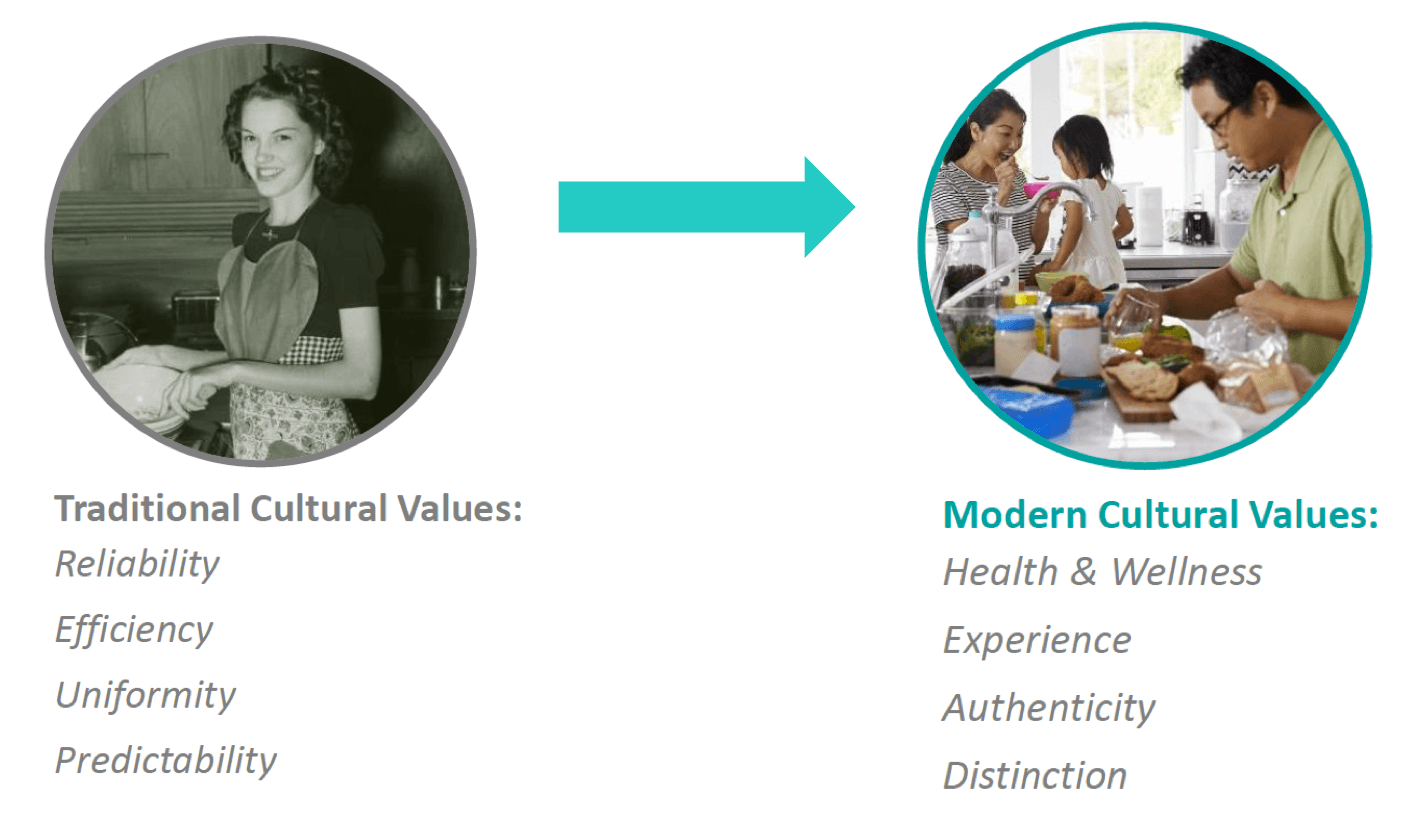The “New” Convenience
It’s Wednesday around lunchtime and, like many working professionals, I’ve hopped over to the local grocery store in search of a quick meal before my next meeting. Expectedly, the line for the salad bar is four or five people deep, as well as the Asian wok station, the sushi bar and the deli counter.
Yet one spot remains eerily empty, despite a plethora of convenient meal options: the frozen entree aisle. The situation seems almost counter-intuitive; an endless assortment of cuisine types ready to go in under 5 minutes and not a soul around. So why the lack of customer traffic?

As the Hartman Group explained at their 2018 Food Culture Forecast a few weeks ago, one of the main factors is that frozen meals are no longer considered “convenient” by the modern consumer.
The “New” Convenience, as CEO Laurie Demeritt states, is much more than the intersection of speed and efficiency.
WHY IT’S HAPPENING
Convenience food is nothing new for the industry. In fact, the ’50s and ’60s began a golden age of convenience-eating with food innovations focused on giving housewives easier ways to put a meal on the table. Frozen, single-serve meals. Canned soups and stews. Jars of pre-made sauces and gravies. Boxed meal solutions.
These product solutions became even more widely used in the late sixties as more women began heading to work and had less time and energy to prepare a home-cooked dinner.
But as the Hartman Group explains, the very qualities that made these products so enticing decades ago are now at odds with today’s consumers’ food values. Reliability has given way to health and wellness concerns. Experience is now prized over efficiency. Uniformity has been replaced with authenticity and predictability is now second-fiddle to distinction.

Source: “The New Convenience.” A.C.T. Food Culture Forecast 2018. The Hartman Group. April 2018.
WHAT WE THINK
It’s not that convenience is no longer relevant, it’s that many brands haven’t changed how they think about–or talk about–convenience as a product attribute.
Consumers today no longer believe that opting for convenience foods (easy, quick, and accessible) means sacrificing freshness, quality, and health and global influences. Our marketing and innovation however, haven’t fully caught up to modern expectations. To be considered a convenience brand/product we must expand our messaging to include these new consumer expectations.
WHAT’S NEXT
The Hartman Group identifies three distinct attributes consumers are looking for when it comes to modern convenience products.
Easy –> Empowering
Despite the news that consumers don’t want to cook, they actually do see the value of a home-cooked meal for themselves or their families.
- Old Convenience: making it easy to assemble a meal in as few steps as possible
- New Convenience: empowering users with a new skill or knowledge to successfully prepare a meal

Quick –> Engaging
Time is even more of the essence. But consumers no longer want to sacrifice interesting, customizable fare for speed. Brands should think about, and package, products as components that can be “arranged” in different ways to create personalized meal solutions.
- Old Convenience: the ability to prep and serve a meal in the least amount of time possible
- New Convenience: the ability to customize and personalize my meals, no matter how small

Accessible –> Flexible
Functionality remains critical when it comes to convenience foods, but ensuring products can be sized, scaled, and streamlined to meet unique consumer needs are equally as important.
- Old Convenience: pre-cut vegetables that can be combined to make a salad
- New Convenience: a complete salad kit that can be eaten as a side OR added to grilled chicken to make a meal

